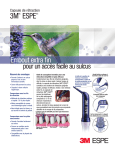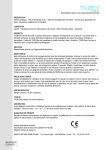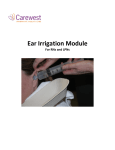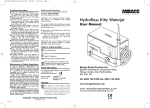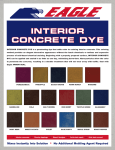Download Take 1 Advanced Troubleshooting Guide
Transcript
Take 1 Advanced Troubleshooting Guide Here you'll find some common impression-taking problems. We'll explain what may be causing the problem along with troubleshooting tips. To receive a custom recommendation try the Impression Material Product Selection Guide. Learn more about Take 1 Advanced Problem: Premature set Evidence • Abrupt change from heavy to light-body material • Muted detail around margin Cause • Set time of wash/tray material not synched • Exceeded working time of material Solution • Begin mix of heavy and light viscosity concurrently • Verify set times for heavy and light viscosities match • Observe working time of materials Problem: Deformation/dimensional change Evidence • Crowns too tall/short • Open contacts • Crown will not seat Cause • Insufficient mix of material • Impression removed too early • Tray movement after seating • Insufficient material elasticity • Fluid absorption during disinfection process Solution • Verify material is adequately mixed before seating and completely set prior to removal • Use passive force to maintain tray position when using open-bite technique • Verify no tooth contact with tray sides or impingement in closed-bite technique • Choose material with adequate elasticity • Follow disinfection protocol carefully Problem: Tearing at margin Evidence • Visible tears at margin • Lack of flash extending apically around entire preparation Cause • Material has insufficient tear strength • Presence of severe undercuts • Insufficient sulcular expansion Solution • Use material with adequate tear strength • Consider blocking out undercuts, especially in cases with gingival recession • Ensure at least .5 mm sulcular expansion Evidence • Unset or mottled surface around preparation • Lack of detail • Shiny/wet appearance Cause • Contamination due to latex gloves; direct contact with material or residue left on teeth • Contamination due to temporary materials or composite • Expired material or exceeded material shelf life Solution • Use latex-free gloves when handling VPS material • Rinse preparation area thoroughly after using other restorative materials • Use automated mixing device to minimize exposure to contaminants • Do not use expired material Problem: Surface inhibition or “non-set” Problem: Poor model detail Evidence • Small bubbles/indentations in cast • Powdery cusps Cause • Release of hydrogen gas from VPS impression after pouring cast • Tooth contact with mesh lining of closed-bite impression tray Solution • Follow manufacturer instructions regarding any delays for pouring models after taking impression • Place cotton roll on contra-lateral side when using closed-bite trays to prevent direct tooth contact with tray; this prevents water from leaching through tray after cast has been poured Problem: Evidence Voids in wash material • Visible voids in wash material around tooth preparation Cause • Bubbles incorporated into material during mixing or loading syringe • Bubbles incorporated while syringing material intraorally Solution • Use automix systems • Syringe material intraorally in continuous stream around each preparation; do not lift syringe tip from material Problem: Insufficient or excessive compression Evidence • Insufficient: wash material flows away from preparation area • Excessive: wash material displaced from preparation area; “burn through” Cause • Insufficient compression of wash material from adjacent tooth/tray or heavy-body material • Excessive compression of wash material due to high viscosity of tray material Solution • Use tray viscosity material with greater compressive force, or use custom tray • Use tray material with lower viscosity to avoid displacing wash material Problem: Incomplete margin Evidence • Voids or “jumps” on margin Cause • Inadequate tissue management • Contamination from intraoral fluids • Insufficient compression of wash material Solution • Use Expasyl™ retraction paste to open sulcus and help maintain dry field • Use hydrophilic wash material • Select tray viscosity with adequate compression Problem: Voids in tray material Evidence • Visible voids in set impression • Tearing of impression • Poor fit at seating Cause • Introducing bubbles when filling tray; layering material • Introducing bubbles when mixing material by hand Solution • Keep tip buried in material during filling • Fill in continuous path; do not layer material • Use automated mixing machine for tray viscosity Problem: Tooth contact with tray Evidence • Visible impingement Cause • Incorrect size tray • Tray seating not aligned with dentition Solution • Verify tray has enough room for 2 mm of impression material between tooth and tray walls



